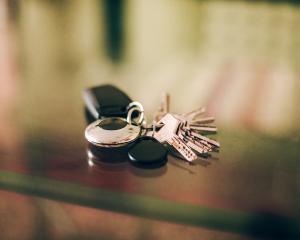Teachers are demanding to know if they risk police charges for physically separating school fights or defending themselves when students attack.
Drug-fuelled aggression, organised fight-clubs and uncertainty around the law are at the centre of serious concerns among teachers - and what they are legally allowed to do to stop violent and extreme behaviour.
However, debate rages over whether new laws are needed to allow teachers to protect students and themselves, or, whether it's down to school boards to outline what is an acceptable response.
Executive member of the Secondary Principals' Association of New Zealand, Patrick Walsh, says the problem of violent school behaviour is evolving beyond playground scraps. His view is backed by new data showing more students are being expelled or excluded for attacking teachers.
Mr Walsh says how teachers react to violent incidents could even be the difference between life and death.
"Increasingly we're dealing with students who do exert violent behaviour or even some that potentially self-harm,'' Walsh told the Herald on Sunday.
"You might have a student that threatens to kill themselves and begins to run off the school property. In situation like that, what's a teacher to do? If they do commit suicide, how would you feel? On the other hand should you tackle them or stop them leaving school property?
"The problem is the Education Act doesn't specifically authorise teachers to use restraint on students, there's no section you can cite in the statue which says we authorise teachers to use force to break up fights.
"There's not the protection to make sure if they intervene, they're not going to end up in court themselves.
"We do need legislation that catches up with the existing context that teachers are there to teach, but unfortunately sometimes they are dealing with behaviour which puts other students at risk.''
Ministry of Education statistics obtained under the Official Information Act show there were 71 exclusions or expulsions in 2014 for physical assaults on school staff _ compared to fewer than 57 the previous year.
In contrast, the number of attacks on fellow students went down - with 157 exclusions and expulsions in 2014 for those assaults, compared to 206 in 2013.
Mr Walsh, the principal of Rotorua's John Paul College, says drugs, and new technologies are escalating the problem.
"There are some students, not many, but there is a worry about students coming to school under the influence of drugs and they're very hard to reason with. Sometimes the drugs they're taking can make them very aggressive and irrational. Alcohol seems to be less of a problem,'' he said.
"What's brought it to our attention is social media where students organise fight clubs, at the local park in uniform, or even fights on school property. In the background you can see schoolteachers yelling at students to stop, but not intervening.
"Parents of a child that's been assaulted naturally ask the question `why aren't the teacher's on duty interfering to break it up?'''
Marin Cocker, executive director independent internet watchdog NetSafe, says the distribution of filmed violence is a major concern, compounding the impact on victims.
"Recording of fights will be tracking upwards with the growth of video capable phones,'' Cocker said. "Many of those recordings will be shared amongst friends in closed groups or peer-to-peer as a way of keeping it away from the eyes of authorities.
"Recordings can add another layer of harm to the incident as a victim can continue to be humiliated. Videos can also hinder de-escalation of disputes as they continue to remind the participants of previous harms or wrongs.''
The president of the New Zealand Post Primary Teachers' Association (PPTA), Angela Roberts, says issues around violent behaviour have needed clearing up for years, but the solution rests with school boards, not new laws.
"We've had conversations about when it's OK step in between students for decades. The problem with legislation and guidelines is they're not necessarily the answer when what you're requiring is a nimble response. The solution is people, it's not legislation. It's messy and complex, because it involves people.''
Ms Roberts, a teacher and board of trustees member at Stratford High School, says schools need to face up to a "hard conversation''.
"It's about professional development and having really strong conversations about what will we do, what do we expect, what will keep everybody as safe as possible. Boards of trustees should be developing really good policy on this. Different communities will have different expectations. It will look different to a secondary school to a small, rural primary with 20 kids.''
The Ministry of Health says overall student behaviour is improving, but agrees schools require clear guidelines.
"While students may be posting videos online of fights, the evidence is that student behaviour in schools is getting better, not worse,'' Kim Shannon said, the Ministry's head of sector enablement and support.
"Independent research by the New Zealand Council for Educational Research has found that student behaviour was "much less of a major issue'' for secondary schools in 2015 than it had been in 2012 and 2009. Meanwhile, suspensions, stand-downs and exclusions from school have reached record lows.
"While fights and other physical conflict at schools are a small issue, schools do need really clear guidance on what to do when these situations come up, and what their powers are.''
Ms Shannon said the Ministry is preparing to release two sets of guidelines _ one on seclusion and another on restraint.
"The guides are excellent, practical handbooks on how to prevent and de-escalate difficult situations, and what to do if that isn't successful.
"Schools will be advised that physical restraint should only be used in emergency situations when the student's behaviour poses an imminent danger of physical injury to themselves and others. Where a student can't be managed safely, and there is imminent danger to anyone, police should be called.''
SCHOOL FIGHTS: SOME OF NZ'S WORST RECENTLY
March 2015: Police ask Facebook to take down a page set up for Auckland children to post videos of vicious schoolyard fights and brag about violence.
September 2015: Shocking footage of a vicious brawl between South Auckland school girls emerges and goes viral. Deputy principal slams the brutal event, saying it made him feel "sick''. Three girls are expelled.
April 2016: Police visit a top Nelson high school after reports of a fight breaking out among a group of girls on the school grounds.
June 2016: A schoolboy in Oamaru is ruled out of playing rugby all season after being head-butted and kicked in the head in a lunchtime scrap at school. The incident was filmed.
August 2016: Up to 100 students used knives, chairs and pieces of wood in a brawl that spilled from an Auckland street into a KFC restaurant.











